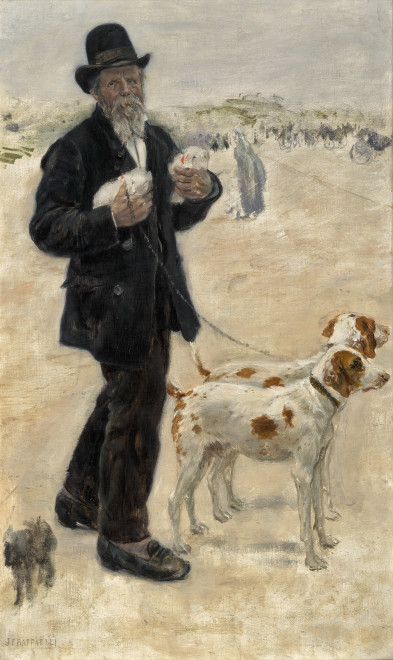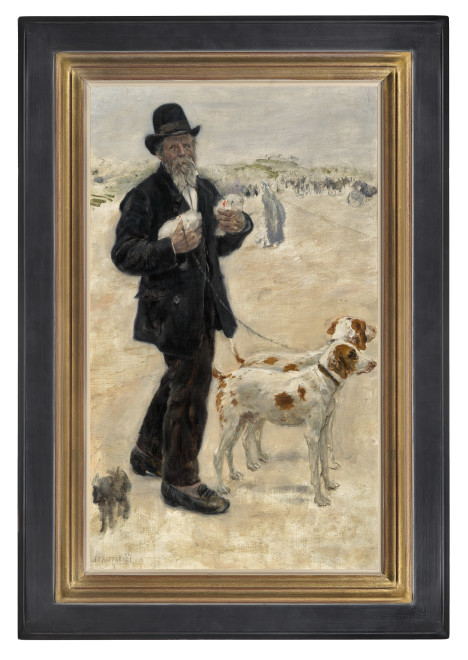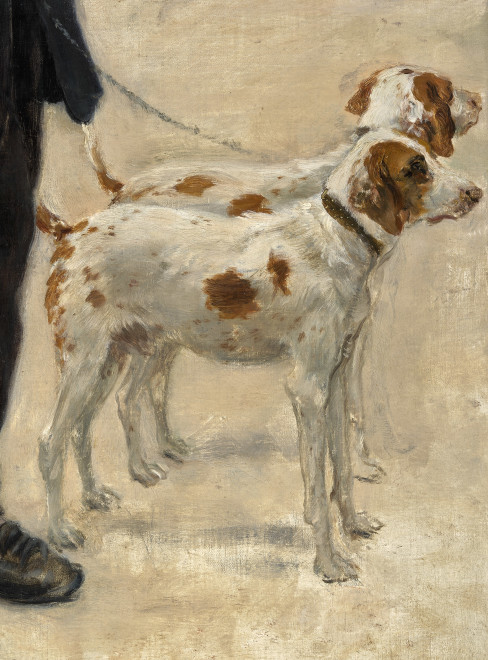Raffaëlli was lauded by his contemporaries for his keen ability to capture peoples’ soul in his paintings – namely, the humble street merchants of the Parisian suburbs.
Provenance
Galerie Brame & Lorenceau, Paris
Sale: Hôtel des ventes, Bordeaux Sainte Croix, March 29, 2008
Sale: Sotheby’s, New York, October 23, 2008, lot 61
Sale: Christie’s, London, July 8, 2009, lot 230
Private Collection, South Africa
Exhibited
Paris, Avenue de l’Opéra, Exposition des œuvres de Jean-François Raffaëlli, 15 mars - 15 avril 1884, no 7 as Le marchand de chiens
Literature
R. Miles, ‘’L’exposition Raffaelli,’’ in Le Mémorial diplomatique : journal international, politique, littéraire et financier, January 5, 1884, p. 204
Fourcaud, ‘’Exposition d’œuvres de J-F Raffaelli,’’ in Le Gaulois, 15 March 1884, p.3
Catalogue note
Raffaëlli was lauded by his contemporaries for his keen ability to capture peoples’ soul in his paintings – namely, the humble peasants and street merchants of the Parisian banlieue.[i] When reviewing l’Exposition Raffaëlli in 1884, R. Miles highlighted Raffaëlli’s capability to bestow nobility onto his impoverished subjects.[ii] Raffaëlli upheld a distinct philosophy that he expressed through his depictions of French suburban life: “[T]here is no beauty in Nature; beauty resides in character.”[iii] It was Raffaëlli’s ability to capture the essence of his subjects that makes his paintings so vivid.
In Le marchand de chiens, the dog seller is simultaneously in solitude and surrounded by companions. In the background, people are strolling through the Paris fortifications, or fortififs – large spaces often painted by Raffaëlli. Void of people around him, the emphasis is placed on the relationship between the seller and his dogs. He could not afford to keep the puppies and was forced to sell them. The two hounds in front of the seller stay close to their owner, each looking in the opposite direction to protect him. The hands of the dog seller figure prominently in the scene, firmly supporting the puppies for sale. Such an embrace furthers the seller’s close relationship to his sole companions. The solitary nature of this scene, a quintessential example of Jean-François Raffaëlli’s take on the Paris suburb, artfully depicts the banlieusards’ reality– a lonely life in between the city and the country.[iv]








